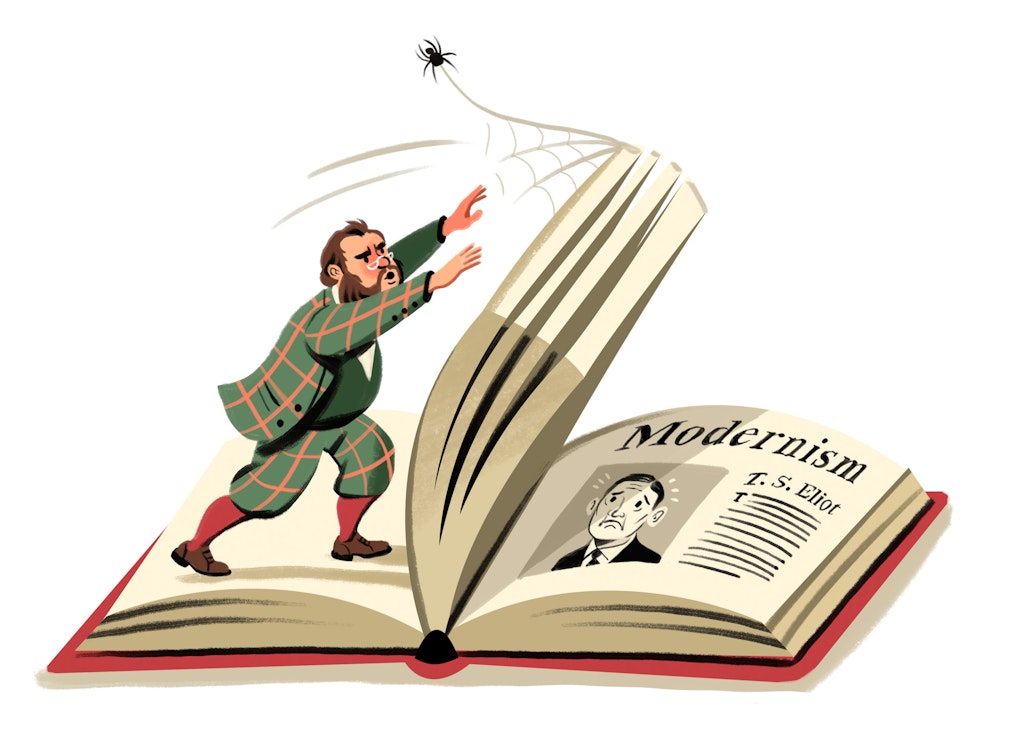King Ratter
Patrick Galbraith hunts with a terrier brought back from the brink
You know what the fifth Duke of Beaufort said about hunting rats?” Harry asked, as we watched his pack of Sealyham terriers, feverishly pushing their noses into the nooks and crannies of a tumbledown wall. I shook my head. “He said there’s two forms of hunting — rat-hunting and fox-hunting — and rat-hunting comes a very close second, and if it’s good enough for the Duke, it’s good enough for Harry Parsons.”
It is highly likely you will go your whole life without seeing a Sealyham
At that point, a large brown rat flew out from among the stones in front of us and ran for the river. On spotting the creature coming towards him, eight-year-old Lennon Light, whose granddad had brought him along on the basis that a young farmer’s education happens in the field, not the classroom, gave a sonorous holloa. I wasn’t in at the kill but young Lennon reported that Mabel, a Sealyham in her prime, caught the beast just as it leapt down the bank into the dark mid-winter water.
It is highly likely you will go your whole life without seeing a Sealyham. Back in the late Eighties the obscure breed almost faded into extinction, with just over 40 puppies registered each year. “I realised they was gonna be knackered,” Harry explained, “So I got off my arse and decided to do something.” Within a few months, Harry had sold his cleaning business and bought Alice, a working Sealyham pup from Wales.
The sealyham was originally developed as a badger-hunting dog in the 1850s by Captain John Edwardes, who lived at Sealyham House in Pembrokeshire. Harry feels the breed first lost its way in the 1930s and that Humphrey Bogart has a lot to answer for. Bogart was one of a number of celebrity owners, including Alfred Hitchcock and Elizabeth Taylor, who saw the terriers as props in their glamorous lives, rather than working countryside companions. “When he wasn’t acting and he wasn’t womanising, Bogart was drunk,” Harry told me, in anguish. “What time did he really have in his life for a Sealyham, the world’s best rat-hunting dog?”
But canine fashion is an ephemeral thing and by the time Bogart had died of throat cancer, aged just 57, the Sealyham’s place at the heels of the stars had been taken up by the likes of the dachshund, Afghan hound and poodle. Tragically, its celebrity status until that point meant there was great demand for puppies, which were bred not for intelligence or temperament but simply to turn a quick quid, something Harry feels is “disgusting”. Not fashionable and no longer functional, the breed spent 20 years drifting in the doldrums until a small group of aficionados, spearheaded by Harry, took up the cause.
As we watched the terriers tearing after the second bolt of the day, Harry explained that by crossing the best Sealyhams they could find with the likes of the Jack Russell, they slowly managed to reestablish a breed Captain Edwardes would recognise. Nine rats later, we stopped for a piece of fruitcake and a glass of whisky. “Every hunting, shooting or fishing man should respect his quarry,” Harry told me thoughtfully while we watched a cock pheasant scratching around in the heavy Lincolnshire plough.
While he recognises some people might object to what he does, he was at pains to point out that it is a far more humane method of rat management than the poisoning carried out by pest control professionals, which can lead to a horrible death. “We don’t injure rats,” Harry continued. “They either get killed or they get away. After all, the rat’s my quarry and he deserves a quick dispatch.”
Buoyed by the whisky, we set to it again with Harry’s brother, Mark, lifting stones from the wall to help the terriers dig down into the nests. Twenty yards away a cry went up and the dogs scrambled. High up in a blackthorn hedge, a large rat had been spotted, making an acrobatic escape. Alerted to its presence, the dogs tore after it, and leapt up in vain, trying to knock it to the ground. As I watched the creature disappear victoriously among the gnarled thorns followed by the terriers trotting back from their futile chase, I was struck by a pang of admiration for the common rat, one of nature’s grittiest survivors.
An hour or so later, I shook Harry’s hand and walked off across the fields, leaving him to hunt till dusk. His life, I thought, as I tried to retrace my steps by remembering where we’d crossed various streams and passed notable trees, has been informed by respect — not just for the breed of terrier that he’s brought back from the brink but for the rat too. What some reduce to pest status and seek to exterminate, Harry has taken on as a canny adversary and imbued with glory.
Enjoying The Critic online? It's even better in print
Try five issues of Britain’s most civilised magazine for £10
Subscribe














